The 2010 Dreaming Festival
By Mark O’Brien
The 2010 Dreaming Festival was even more fabulous than the previous 3 ‘Dreamings’ I have been privileged to attend and it was to be the last, at least for some years.
Go to the bottom of this page for lots of photos of the 2010 Dreaming Festival
There were so many great acts, with Shellie Morris once again dominating my personal ‘highlights reel’. Shellie was adopted out when she was a baby, and was raised by a middle class Sydney family.
She went to private school, received classical music training, including opera singing, and when she was around 20, her adopted parents, aware of something missing in their adopted daughter, took her up to the NT to meet her Indigenous birth family.
Since she has become the ‘Queen of Darwin’, wowing audiences in town in between extended tours out to communities, where she runs musical programs to help kids, and immerses herself in Culture, learning from her elders.
And growing her heart. I swear that she must have a massive heart, as she simply sits on stage and looks around and tears form in my eyes, and in the eyes of many others in the room. When she smiles, and radiates around the room, the world seems a warmer place.
And she sings too, (a good thing for a singer songwriter!) incredible songs with an incredible voice, her showpiece being ‘Swept Away’ where she sweeps all before her as her voice soars on the chorus.
I have seen Shellie perform maybe 10 times, the first one at the Dreaming last year, where halfway through her 40 minute set she started to cry and had to stop singing.
The audience immediately all stood up clapping, tears streaming down their cheeks. There is simply, ‘something about Shellie‘ that blows everyone away.
I watched some dance and theatre performances. At a festival like this you tend to have to choose between simultaneous performances, so there were some shows I heard glowing reports of.
Theatre like My Name Is Sud, from the emerging Sudanese community in Blacktown, touched its audience and left them changed; Magpie Blues blew its audience away. As did Kaha:Wi Dance Theatre.
Different people are attracted to totally different acts, so it is always good to talk to people about what they have seen.
I did see Black Sheep: Glorious Baastards which was very funny, but of the shows I saw my favourite was Chasing the Lollyman, Mark Sheppard’s one-man show which ended with him giving his rendition of what the first Indigenous PM of Australia’a victory speech would be.
There was lots of great music. A musical tribute to Ruby Hunter who passed away over the previous year was incredibly touching and meaningful (Indigenous people do ‘meaningful’ in ways us ‘whiteys’ can only dream!), and this was followed by her husband Archie Roach who enthralled us all while keeping us ‘in there’.
Ocha was for me the dance hit of the festival, with crowds wanting a great dance flocking to every show. Dan Sultan was great also, Chocolate Strings, and the Solomon Island’s Narasirato Pan Pipers were stunning. I saw many great bands, and had many good dances.
There were so many great moments, with so many other acts, but the thing that has stayed with me the most was a screening of the film, Our Generation. This was about the NT Intervention, and I felt confronted by every racist and paternalistic impulse I had ever had.
It was shocking to hear the stories of those affected by this paternalistic land grab, and I felt deep shame at not knowing, of being a part of a society that treats its Indigenous citizens in this way. I commend this film to everyone.
There were some claims made in the movie which I was not convinced by but if true are a devastating indictment of European Australia.
After the film there was a panel, with Gary Foley, Shellie, Rhoda Roberts and a very distinguished man (sorry, I missed his name!) who spoke of speaking often at the UN advocating Indigenous rights.
Gary opened up by saying he liked the film but that there was nothing new in it, that we have all known this stuff for 40 years, or we should have. He made me realise there is no excuse for what is happening in this country, that has been happening for 200 years.
That ignorance is not an acceptable excuse for being on the wrong side.
The man from the UN spoke of his frustration – ‘What more do we have to do?’ he cried.
It made me see again how loving and peaceful the Indigenous people in Australia are. If they were Irish or Muslim or Basques we’d have bombs going off, we would have riots and violence.
Instead we have peaceful protests, we have sit-ins, we have delegation after delegation meeting with Whitey, we have off-the-chart mortality rates, we have an indelible shame of the gap between white and black on any indicator of health and prosperity you care to mention. And we, ‘white Australia’, get on a high horse when we encounter Aboriginal anger!
So what can ‘we’ do? I racked my brain, still rack it, and mostly all I come up with seems paternalistic. How can I help the people in communities? How can I help address the various inequalities? Is my help wanted? Does it have value?
Do I actually have anything to teach, to share, to give? When posing this question, Shellie was also in a gap. Maybe it simply is about becoming aware, of calling our politicians to account, of challenging assumptions, comments at a dinner table or in a hotel bar.
Like most European Australians I grew up without having anything to do with Indigenous people. As an adult I still did not have anything to do with Indigenous culture until I was in my 40s, until I started ‘paying attention’.
Where have I been? Oddly enough, for most white Australians, Indigenous culture must be searched out, must be hunted, and requires a thirst.
Indigenous wisdom is never given out, it has to be earned, which is why most of ‘us’ have no comprehension of the Indigenous cultural wealth that is on our doorstep.
Over the past 5 years I have been attending the Dreaming and ‘listening’ to other voices, noticing who in my community is Indigenous and what makes them tick.
I have also thought I was seeing underneath various stories in the media, and at some times even been sympathetic to the aims of the ‘Intervention’, John Howard’s virtual state of emergency in, and only in, Indigenous communities.
It is hard to believe that the institutions one believes in are in fact mired in racism.
It is hard to acknowledge that the famous Aussie ‘fair go’ amounts to zip when it comes to our Indigenous people.
That pretty much all of those great Aussie qualities paraded each year at Australia Day and Anzac Day are just white fantasies, illusions.
Where do we go from here, and how do we get there? Pretty much all we can concern ourselves with is the ‘how’, which ultimately comes down to love.
If white Australia learns to listen, to empathise, to drop paternalism, to reach out, then maybe the place we arrive at will be worth the journey.
If not, then the cycle of anger, of disempowerment, of poverty, of continuing diminished health indicators will roll on, and this most ancient of races may just disappear as collateral damage.
Published in July 2010
Share The 2010 Dreaming Festival with your friends on Facebook
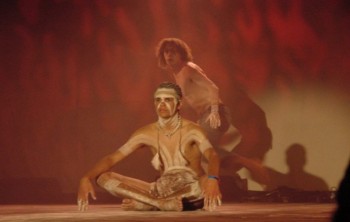

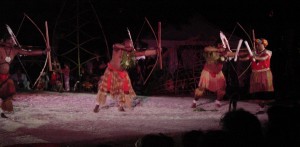
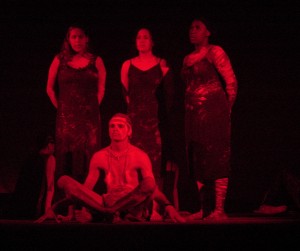
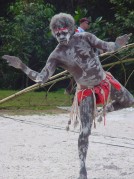
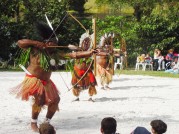


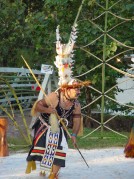
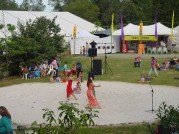
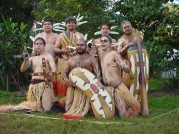

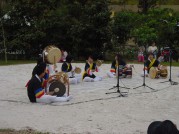
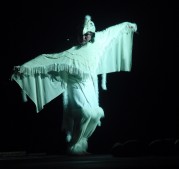
Leave a Reply